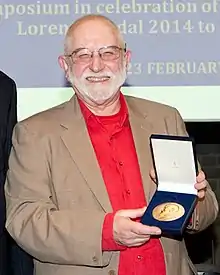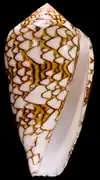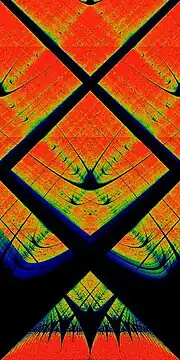Michael Berry (physicist)
Sir Michael Victor Berry, FRS, FRSE, FRSA, HonFInstP (born 14 March 1941), is a mathematical physicist at the University of Bristol, England.
Sir Michael Berry | |
|---|---|
 Michael Berry with Lorentz Medal, February 2015 | |
| Born | Michael Victor Berry 14 March 1941 Surrey, England, United Kingdom |
| Alma mater | University of Exeter (BSc) University of St. Andrews (PhD) |
| Known for | Berry phase Berry connection and curvature Berry–Robbins problem Berry–Tabor conjecture Weyl–Berry conjecture Quantum carpet Quantum chaos |
| Awards | Maxwell Medal and Prize (1978) Fellow of the Royal Society (1982) Lilienfeld Prize (1990) Royal Medal (1990) IOP Dirac Medal (1990) Naylor Prize and Lectureship (1992) ICTP Dirac Medal (1996) Knight Bachelor (1996) Wolf Prize (1998) Ig Nobel prize (2000) Onsager Medal (2001) Pólya Prize (2005) Lorentz Medal (2014) |
| Scientific career | |
| Institutions | University of Bristol |
| Thesis | The diffraction of light by ultrasound (1965) |
| Doctoral advisor | Robert Balson Dingle[1] |
| Doctoral students | Jenny Nelson Jonathan Keating |
| Website | michaelberryphysics |
He is known for the Berry phase, a phenomenon observed e.g. in quantum mechanics and optics, as well as Berry connection and curvature. He specialises in semiclassical physics (asymptotic physics, quantum chaos), applied to wave phenomena in quantum mechanics and other areas such as optics.
Education and early life
Berry was brought up in a Jewish family and was the son of a London taxi driver and a dressmaker.[2] Berry has a BSc in physics from the University of Exeter and a PhD from the University of St. Andrews.[3]
Career and research
He has spent his whole career at the University of Bristol: research fellow, 1965–67; lecturer, 1967–74; reader, 1974–78; Professor of Physics, 1978–88; Royal Society Research Professor 1988–2006. Since 2006 he is Melville Wills Professor of Physics (Emeritus) at Bristol University.[4]
Publications
- Diffraction of Light by Ultrasound, 1966
- Principles of Cosmology and Gravitation, 1976; 2nd edition. 1989; pbk
{{cite book}}: CS1 maint: postscript (link)[5] - About 395 research papers, book reviews, etc., on physics[6]
Awards and honours
He was elected a Fellow of the Royal Society (FRS) in 1982[7] and knighted in 1996.[8] From 2006 to 2012 he was editor of the journal, Proceedings of the Royal Society A.
Berry has been given the following prizes and awards:[9]
- Maxwell Medal and Prize, Institute of Physics, 1978
- Elected Fellow of the Royal Society of London, 1982
- Elected Fellow of the Royal Society of Arts, 1983
- Elected Fellow of the Royal Institution, 1983
- Elected Member of the Royal Society of Sciences in Uppsala, Sweden, 1986
- Bakerian Lecturer, Royal Society, 1987
- Elected member of the European Academy of Sciences and Arts, 1989
- Dirac Medal, Institute of Physics, 1990
- Lilienfeld Prize, American Physical Society, 1990
- Royal Medal, Royal Society, 1990
- Naylor Prize and Lectureship in Applied Mathematics, London Mathematical Society, 1992
- Foreign Member: US National Academy of Sciences, 1995
- Dirac Medal, International Centre for Theoretical Physics, 1996
- Kapitsa Medal, Russian Academy of Sciences, 1997
- Wolf Prize for Physics, Wolf Foundation, Israel, 1998, jointly with Yakir Aharonov
- Honorary Fellow of the Institute of Physics, 1999
- Forder Lectureship, London Mathematical Society, 1999[10]
- Foreign Member: Royal Netherlands Academy of Arts and Sciences, 2000
- Ig Nobel Prize for Physics, 2000 (shared with Andre Geim for "The Physics of Flying Frogs"). By 2022 his and Geim's Ig Nobel for the magnetic levitation of a frog was reportedly part of the inspiration for China's lunar gravity research facility.[11][12]
- Onsager Medal, Norwegian University of Science and Technology, 2001
- Gibbs Lecturer, American Mathematical Society, 2002[13]
- 1st and 3rd prizes, Visions of Science, Novartis/Daily Telegraph, 2002
- Elected to Royal Society of Edinburgh, 2005
- Pólya Prize, London Mathematical Society, 2005
- Doctor of Science, honoris causa, University of Glasgow, 2007
- Selected Clarivate Citation laureate in Physics in 2009, jointly with Aharonov.[14]
- Doctor of Science, honoris causa, Russian-Armenian (Slavonic) University in Yerevan, 2012
- Lorentz Medal, 2014[15]
- Lise Meitner Distinguished Lecture, 2019
See also
References
- Michael Berry at the Mathematics Genealogy Project
- Rubinstein, William D.; Jolles, Michael; Rubinstein, Hilary L. (2011). The Palgrave Dictionary of Anglo-Jewish History. Palgrave Macmillan. p. 87. ISBN 9781403939104.
- "Academic History of Professor Sir Michael Berry". University of Bristol. Retrieved 22 July 2009.
- "History". PROFESSOR SIR MICHAEL VICTOR BERRY, FRS. 28 June 2013. Retrieved 2 October 2023.
- Longair, M. S. (1991). "Book review: Principles of cosmology and gravitation by M. V. Sims". Space Science Reviews. 56 (1–2): 246. Bibcode:1991SSRv...56..246L. doi:10.1007/BF00178416. S2CID 189795860.
- "Professor Sir Michael Berry: Publications". University of Bristol, UK. Retrieved 2 September 2011.
- "Fellows Directory". The Royal Society. Retrieved 3 May 2018.
- "The London Gazette" (PDF). HMSO. Retrieved 3 May 2018.
- "Professor Sir Michael Berry: Prizes and Awards". University of Bristol, UK. Retrieved 13 March 2011.
- "LMS-NZMS Forder and Aitken Lectureships | London Mathematical Society". www.lms.ac.uk. Retrieved 13 November 2018.
- "China building "Artificial Moon" that simulates low gravity with magnets". Futurism.com. Recurrent Ventures. Retrieved 17 January 2022.
Interestingly, the facility was partly inspired by previous research conducted by Russian physicist Andrew Geim in which he floated a frog with a magnet. The experiment earned Geim the Ig Nobel Prize in Physics, a satirical award given to unusual scientific research. It's cool that a quirky experiment involving floating a frog could lead to something approaching an honest-to-God antigravity chamber.
- Stephen Chen (12 January 2022). "China has built an artificial moon that simulates low-gravity conditions on Earth". South China Morning Post. Retrieved 17 January 2022.
It is said to be the first of its kind and could play a key role in the country's future lunar missions. Landscape is supported by a magnetic field and was inspired by experiments to levitate a frog.
- Berry, Michael (2003). "Making light of mathematics: 75th Gibbs Lecture". Bull. Amer. Math. Soc. (N.S.). 40 (2): 229–237. doi:10.1090/S0273-0979-03-00972-8. MR 1962297.
- "Thomson Reuters Predicts Nobel Laureates". www.newswire.ca. Retrieved 4 October 2023.
- "Michael Berry". knaw.nl. KNAW. Retrieved 3 April 2022.

